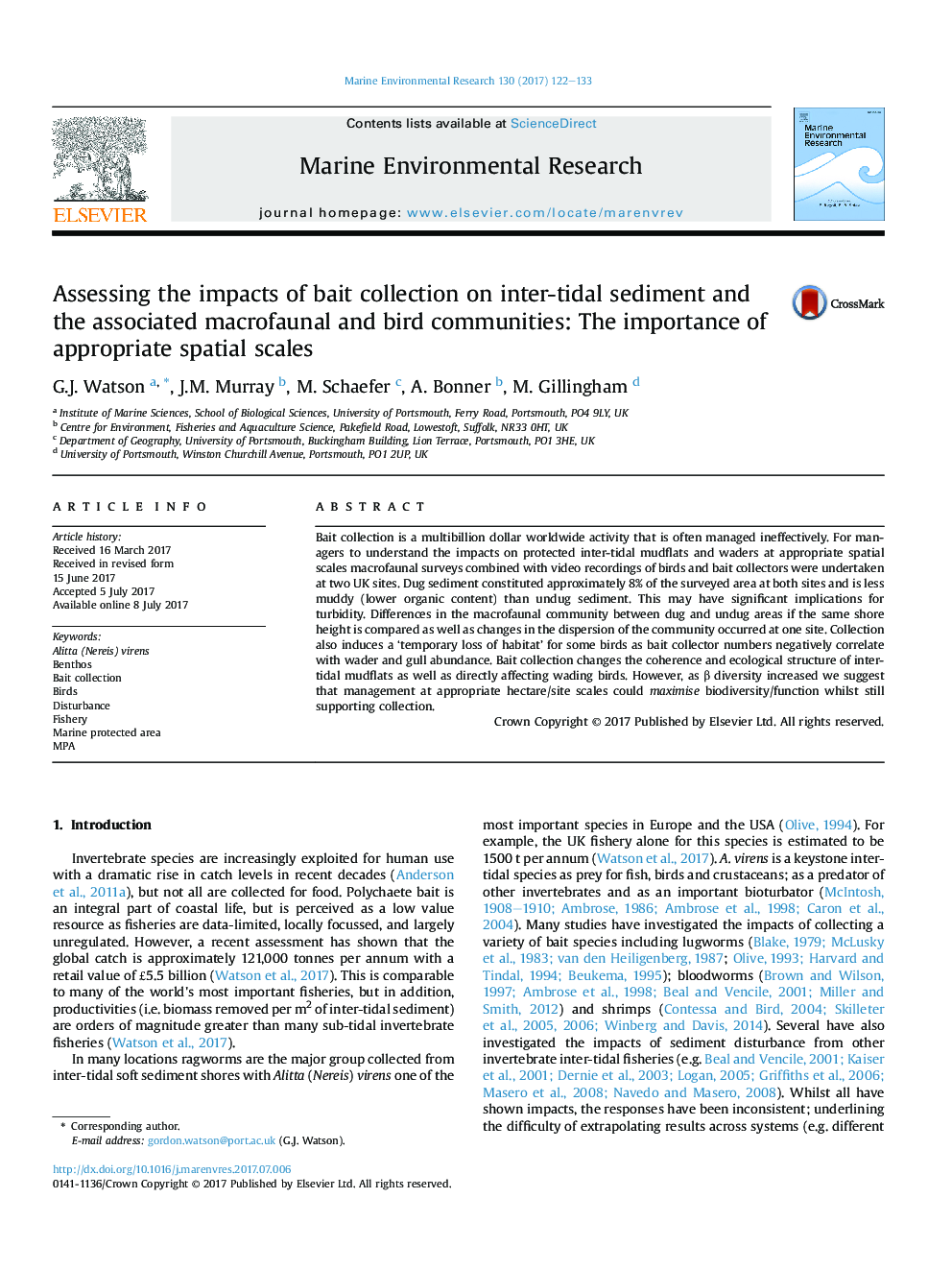| Article ID | Journal | Published Year | Pages | File Type |
|---|---|---|---|---|
| 5766150 | Marine Environmental Research | 2017 | 12 Pages |
â¢8% of sediment was dug per site, but collection in MPA zones was site-specific.â¢Dug sediment has lower organic content.â¢Digging changes the macrofaunal community and decreases community dispersion.â¢Collector activity induces a 'temporary loss of habitat' for waders and gulls.â¢Spatial heterogeneity between dug and undug areas increased site β diversity.
Bait collection is a multibillion dollar worldwide activity that is often managed ineffectively. For managers to understand the impacts on protected inter-tidal mudflats and waders at appropriate spatial scales macrofaunal surveys combined with video recordings of birds and bait collectors were undertaken at two UK sites. Dug sediment constituted approximately 8% of the surveyed area at both sites and is less muddy (lower organic content) than undug sediment. This may have significant implications for turbidity. Differences in the macrofaunal community between dug and undug areas if the same shore height is compared as well as changes in the dispersion of the community occurred at one site. Collection also induces a 'temporary loss of habitat' for some birds as bait collector numbers negatively correlate with wader and gull abundance. Bait collection changes the coherence and ecological structure of inter-tidal mudflats as well as directly affecting wading birds. However, as β diversity increased we suggest that management at appropriate hectare/site scales could maximise biodiversity/function whilst still supporting collection.
